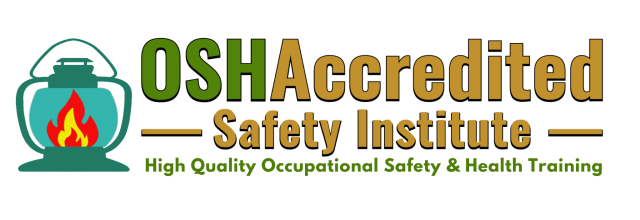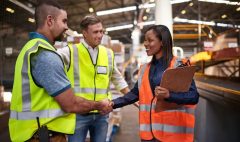The Value of Narration in Online Safety Training
The Value of Narration in Online Safety Training
In today’s fast-paced digital age, online safety training has become the go-to method for organizations to equip employees with essential safety knowledge. As industries across the boardfrom construction and manufacturing to healthcare and logisticsseek efficient, scalable, and engaging ways to train their workforce, online safety courses have emerged as a vital solution. Among the many elements that contribute to the effectiveness of these programs, narration plays a critical yet often underappreciated role.
Whether it’s completing an OSHA course or brushing up on industry-specific safety protocols, narration enhances the learning experience, improves retention, and keeps learners engaged. This article explores why narration matters in online safety training and how it elevates the overall impact of safety programs like OSHA training.
Understanding Online Safety Training
Before diving into narration’s role, it’s important to understand what online safety training entails. These are structured programs delivered digitally to educate workers on workplace hazards, emergency procedures, equipment handling, and regulatory complianceoften required by organizations like the Occupational Safety and Health Administration (OSHA).
Online safety courses allow employees to train at their own pace and on their own schedule. Whether it’s a new hire going through an OSHA training module or a seasoned technician renewing certifications, the flexibility and accessibility of online safety training are among its top advantages.
Key benefits of online safety training include:
- Flexibility: Accessible anytime, anywhere.
- Cost-effectiveness: Reduces travel and training costs.
- Consistency: Delivers standardized content to all employees.
- Scalability: Easily deployable across multiple locations.
- Compliance: Keeps your business aligned with OSHA and other regulatory bodies.
Yet, these benefits can only be fully realized if the training is engaging and effective—this is where narration makes a significant difference.
The Power of Narration in Learning
Narration is the voiceover or spoken component of an online training module. It’s more than just someone reading text aloud—it’s a tool that, when used well, adds clarity, personality, and emphasis to the content being delivered.
Here are a few reasons why narration enhances online safety courses:
- Improves Comprehension and Retention
Humans are naturally auditory learners. By combining visual content with narration, you create a multi-sensory experience that enhances understanding and memory retention. In fact, studies show that learners retain more information when they see and hear content simultaneously.
Imagine a worker taking an OSHA course on confined spaces. A narrated explanation can clarify complex terms, provide real-world examples, and reinforce key takeaways, helping learners better absorb the information than if they read the content alone.
- Increases Engagement
Monotony is a common challenge in online learning. Without interaction or variation, learners may lose focus quickly. Narration introduces a dynamic element that keeps learners attentive. A well-paced, professionally delivered voiceover adds rhythm to the training, making it more engaging.
In safety training, where understanding life-saving procedures is crucial, keeping the learner’s attention can literally be the difference between life and death.
- Supports Diverse Learning Styles
Everyone learns differently. Some people are visual learners, others are auditory, and many are a mix of both. Incorporating narration ensures that auditory learners aren’t left behind. Additionally, it helps learners with reading difficulties, non-native English speakers, or those who simply process spoken language better than written text.
Especially for OSHA training—which includes complex regulatory language—narration can simplify jargon and provide much-needed context to learners.
Narration in OSHA Training: Real-World Applications
Let’s explore how narration specifically benefits OSHA courses and other compliance-focused safety programs.
- Scenario-Based Learning
Many OSHA training modules incorporate realistic scenarios, such as responding to a chemical spill or handling fall protection equipment. Narration adds depth to these simulations by guiding the learner through the scenario, explaining the consequences of each decision.
This helps learners internalize not just the “what” but the “why” behind safety protocols, which is essential for behavior change.
- Highlighting Key Regulations
OSHA guidelines can be dense and technical. Narration allows instructors to break down complex regulations into digestible pieces. For example, instead of reading the full text of 29 CFR 1910, learners can hear a clear, concise explanation of what that regulation means in their day-to-day work.
This makes OSHA compliance less intimidating and more actionable.
- Emotional Connection and Storytelling
Narration also enables storytelling—a powerful educational tool. A narrated story of a real workplace incident can evoke empathy, drive home the seriousness of safety rules, and leave a lasting impression.
Hearing about a worker who suffered a life-altering injury due to a lockout/tagout failure is more impactful than reading a bullet list of procedures.
Tips for Effective Narration in Online Safety Courses
While narration offers many benefits, it must be done well to be effective. Poorly executed narration can become a distraction or even hinder learning.
Here are some best practices for incorporating narration into your OSHA courses and other safety training:
- Use Professional Voice Talent
A monotone or robotic voice can bore learners, while a professional voice actor can convey emotion, urgency, and authority. A clear, confident voice adds credibility to the training.
- Keep It Concise
Don’t overload learners with too much narration. Keep scripts focused and aligned with the visual content. Break longer sections into shorter, digestible segments.
- Sync with Visuals
Narration should support and align with on-screen visuals—not repeat them verbatim. Instead of reading text aloud, use narration to elaborate or explain.
- Maintain a Conversational Tone
Formal language can feel distant and cold. A conversational tone makes the material more relatable and easier to follow, especially for safety courses aimed at a wide audience with varying educational backgrounds.
Narration and Compliance: Meeting OSHA Standards
Using narration in your online safety training also supports OSHA’s broader goals of workplace safety and education. While OSHA doesn’t mandate narrated content, it does emphasize the importance of clear, understandable training.
According to OSHA, employers must provide training “in a language and vocabulary that workers can understand.” Narration supports this requirement by making content more accessible and reducing misunderstandings—especially when paired with subtitles and translated materials.
This not only helps organizations avoid fines and penalties but more importantly, it fosters a safer and more informed workplace.
OSHAccredited Safety Institute Online Safety Courses
All OSHAccredited Safety Institute online safety courses are fully narrated to enhance learning and engagement. Each course features professional voiceovers that guide learners through every module clearly and effectively. Narration ensures that complex safety concepts and OSHA regulations are easy to understand and remember. This auditory support is especially helpful for auditory learners, non-native English speakers, and individuals with reading difficulties. With full narration, OSHAccredited courses offer a comprehensive and accessible learning experience for every user.
Conclusion: Narration Elevates the Learning Experience
In the world of online safety training, every element counts. From user-friendly design and interactive modules to mobile accessibility, each feature plays a role in how well learners absorb and apply safety knowledge. But narration stands out as one of the most impactful tools in the training toolbox.
By improving comprehension, boosting engagement, supporting diverse learners, and adding clarity to complex topics, narration elevates the effectiveness of OSHA training, safety courses, and other essential compliance programs.
As organizations continue to embrace online learning, integrating high-quality narration into safety training is not just a best practice, it’s a strategic advantage. It leads to better-informed employees, improved compliance, and ultimately, safer workplaces.
If you’re developing or updating your online safety training programs, consider the power of voice. It could be the key to making your training not only informative but unforgettable.










